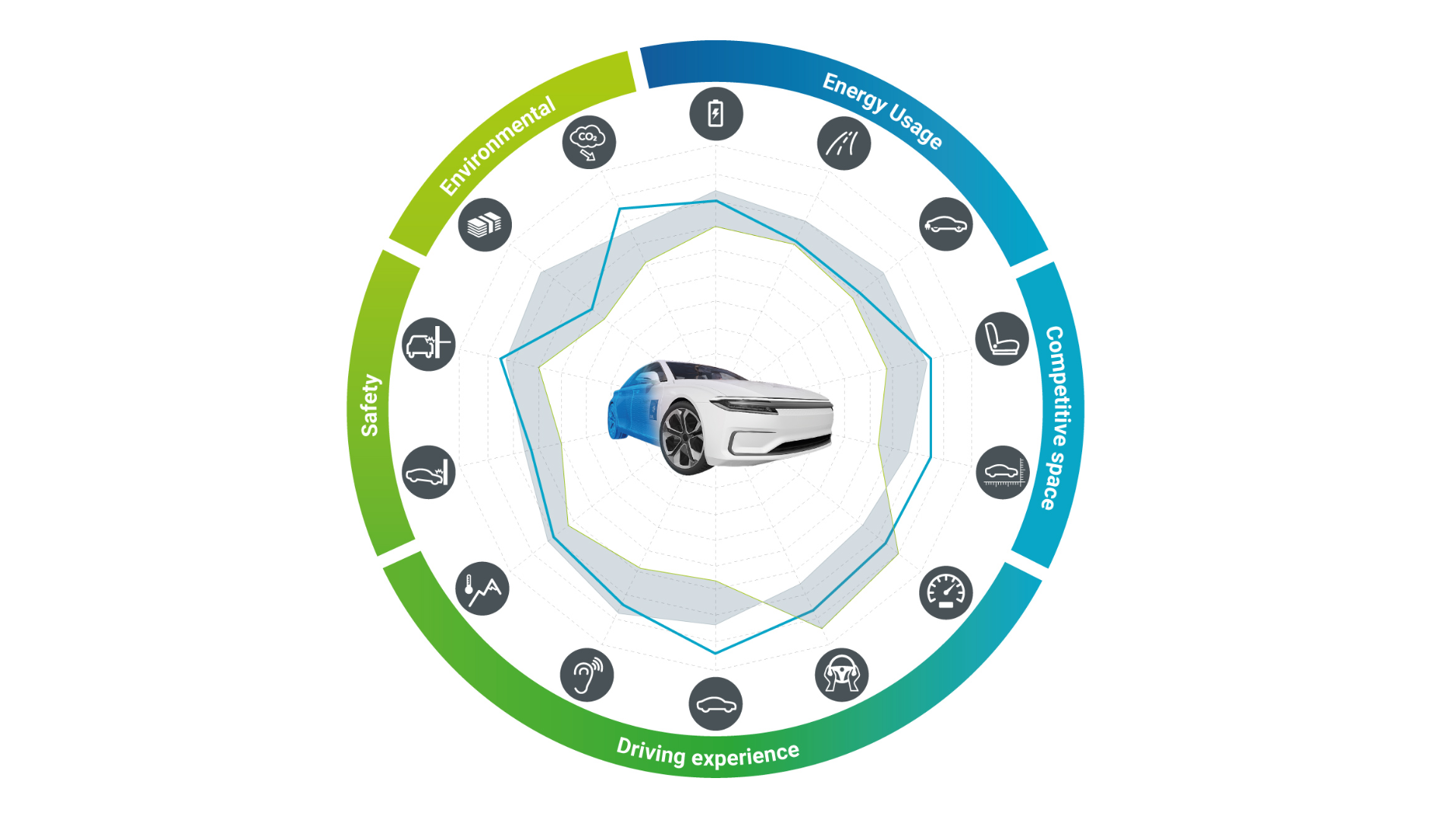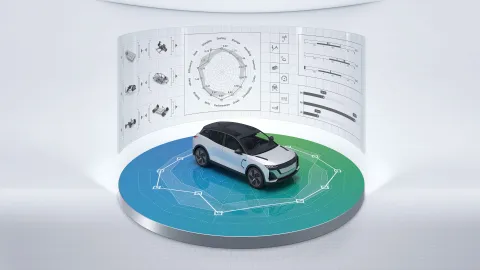The automotive industry is undergoing a rapid transformation – driven by emerging technologies, changing regulations, and growing pressure from new market entrants, especially in China. Traditional concept development methods based on manual iterations and late-stage simulations are too slow, too siloed, and too expensive to remain competitive. Manufacturers urgently need a disruptive approach to master complexity and accelerate decision-making in the concept phase.

Shortened Development Timelines
Market pressure requires manufacturers to validate and freeze vehicle concepts in weeks or months, not years. Traditional workflows based on prototypes and sequential simulation can no longer keep up with the speed of innovation.
Fragmented System Optimization
Siloed engineering teams often make localized decisions that lack a global, vehicle-level perspective. This results in inefficiencies and missed opportunities to achieve true system integration across domains.
Data Scarcity in Early Phases
In the earliest development stages, detailed physical models and measurement data are often unavailable. As a result, conventional CAE tools fall short, and critical trade-offs remain unresolved for too long.
Costly Physical Prototypes
Building and testing prototypes is time-consuming and expensive. Reducing reliance on physical assets is essential to improve efficiency, especially when exploring multiple architecture variants.
Balancing Innovation with Brand DNA
Meeting vehicle targets for performance, safety, and efficiency while staying true to brand identity is increasingly difficult. Early decisions must reconcile a growing number of conflicting design requirements.
AVL Vehicle Composer enables a new level of speed, precision, and system understanding in early-stage vehicle development. By leveraging AI-based prediction models, manufacturers gain fast and reliable insights into the complex interdependencies of vehicle attributes – reducing development time and supporting data-driven concept decisions from day one.
Faster Concept Definition
The tool reduces the time required for vehicle concept development from several weeks to just a few hours. This enables early-stage design iterations to be completed in significantly shorter timeframes, accelerating the overall development process.
AI-Driven Technology Evaluation
AI-based predictions allow real-time evaluation of technology choices across all vehicle systems. This supports informed decision-making during architecture definition and ensures that selected technologies meet the defined performance criteria.
Holistic Attribute Balancing
AVL Vehicle Composer simultaneously considers and balances more than ten key vehicle attributes – including efficiency, dynamics, cost, and safety. Cross-domain influences are resolved automatically, ensuring that trade-offs are transparent and that targets are met on a system level.
Comprehensive System Coverage
The solution covers all major vehicle domains, from powertrain and chassis to HVAC and E/E systems. This allows for early-stage, system-level optimization and ensures consistent performance across the entire vehicle architecture.
Validated, Physics-Based AI Models
All predictions are based on AI models trained with validated data from AVL’s digital twin methodologies and verified against physical benchmarking vehicles. This ensures high model accuracy and builds trust in the results, even in early concept phases.
Vehicle Segment Flexibility
AVL Vehicle Composer is applicable across a wide range of vehicle segments – from A-segment to E-segment. This flexibility enables consistent concept development processes, regardless of vehicle class or application.
Integrated Competitive Benchmarking
The solution includes access to AVL’s benchmarking data, allowing concept decisions to be made with reference to market-relevant competitors. This supports strategic positioning and ensures alignment with current industry trends.
AVL Vehicle Composer™ Software Solution
Our AI-powered software enables real-time, interactive concept assessment without relying on traditional simulation models. By integrating neural networks for multiple attributes (e.g. energy management, performance, vehicle dynamics, vehicle layout or crash), it evaluates 10+ vehicle attributes across all key systems, ensuring optimal performance and balancing cross-influences. The system also features target cascading, aligning vehicle-level goals with detailed KPIs. This streamlined, data-driven approach enhances efficiency, reduces costs, and accelerates concept validation.
Vehicle Concept Development Support
Our expertise ensures a structured and efficient vehicle development process. We offer benchmarking, market profiling, feature definition, architecture engineering, and virtual concept development, helping manufacturers make data-driven design choices early on. With our support, teams can streamline workflows, optimize vehicle architectures, and accelerate decision-making to align with industry demands.

Traditional simulation methods enable balanced decisions only under specific conditions and often too late in the process. AI allows us to instantly see how a design choice, like the battery, affects key attributes such as range and safety.
– Mario Oswald, Skill Team Leader Virtual Vehicle and Energy Management of AVL List


